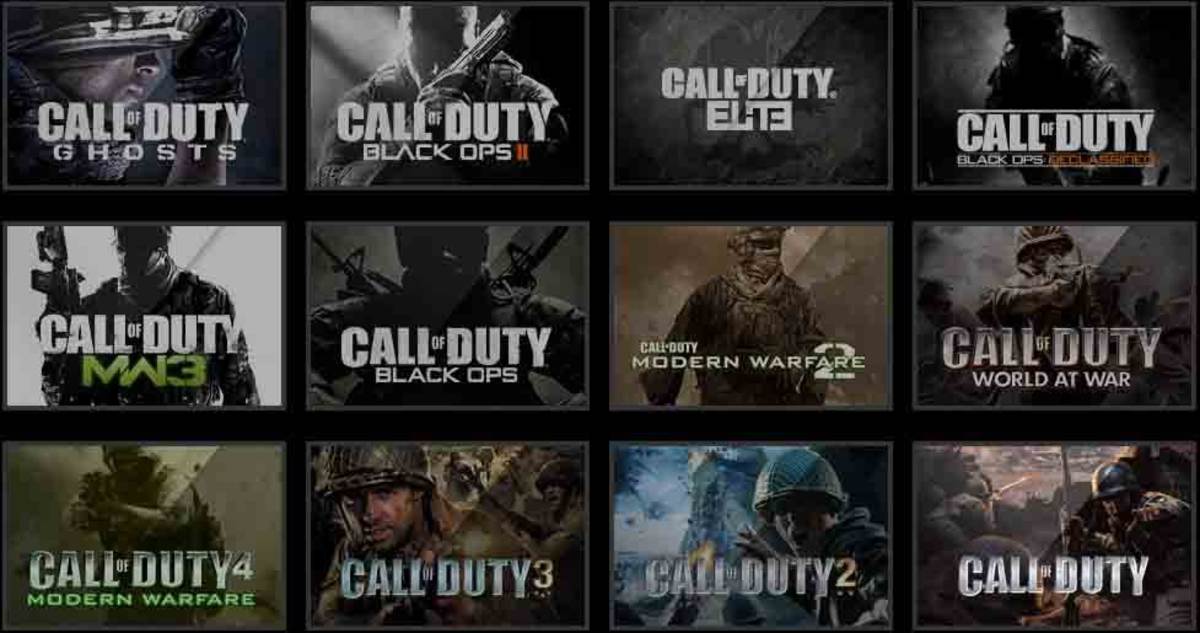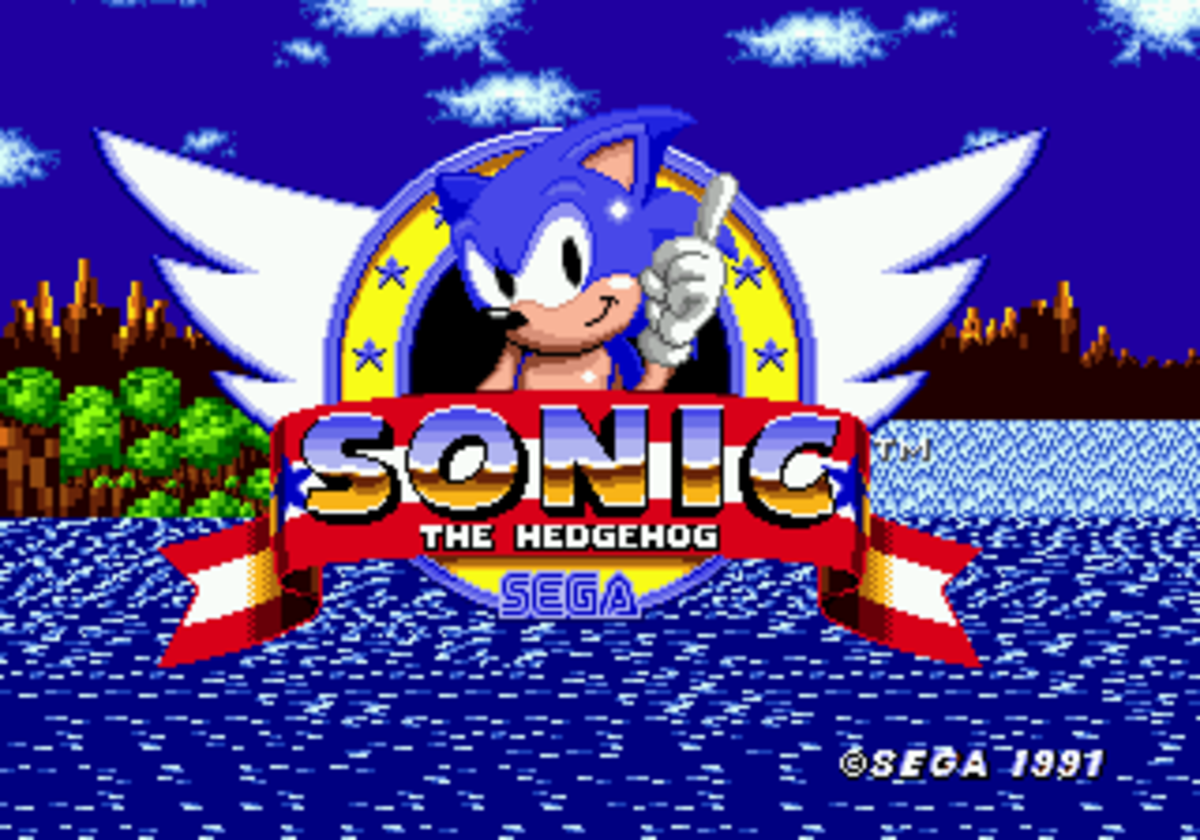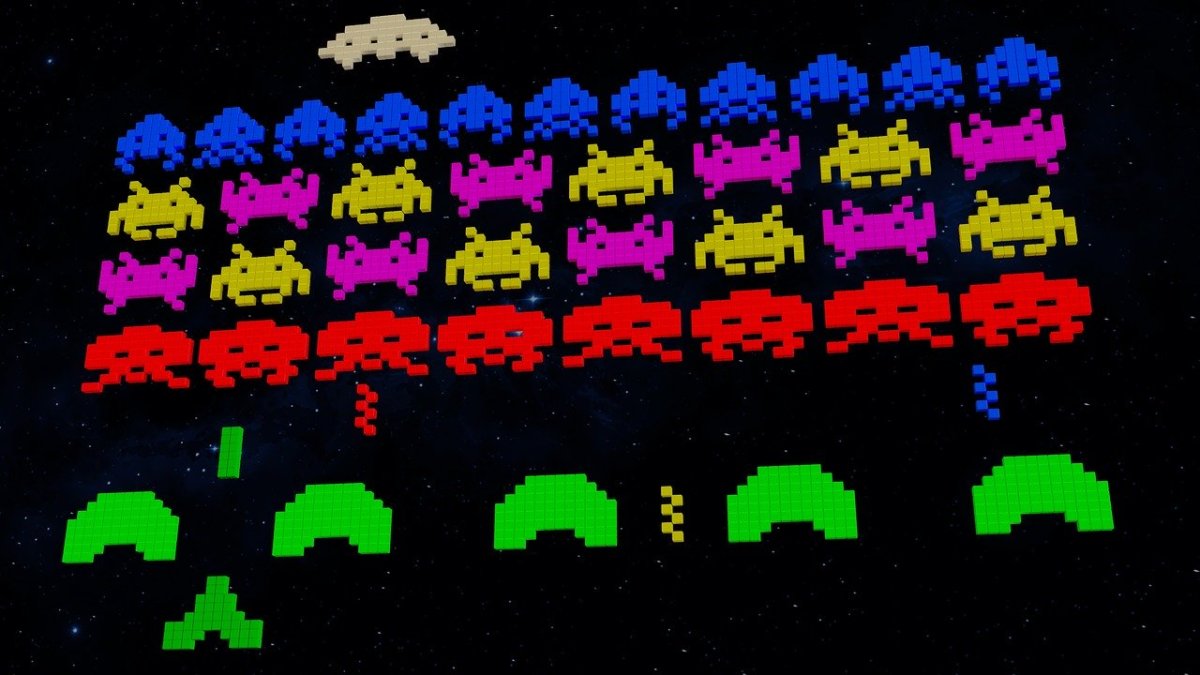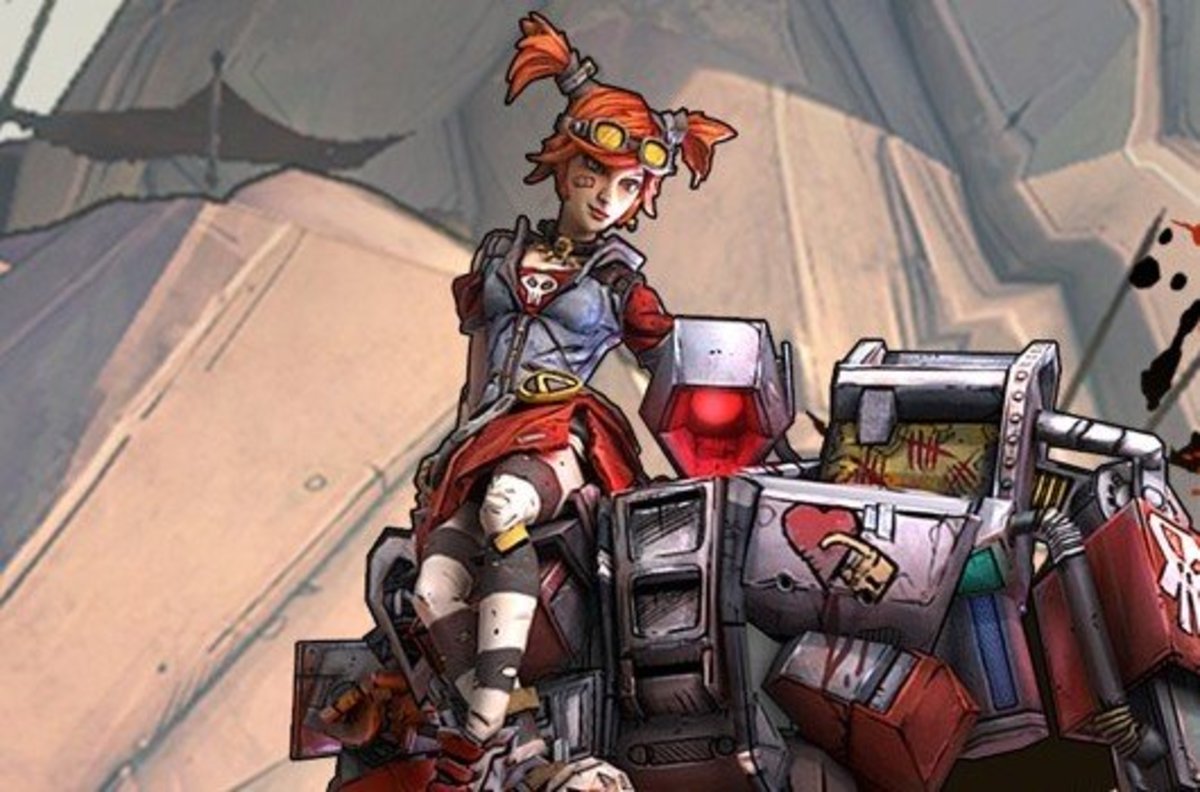Top Ten Most Successful & Iconic Video Game Franchises of All Time
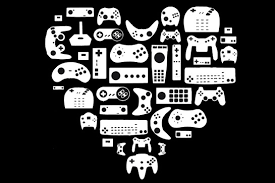
A fanatical foray into the ten most successful and iconic video game franchises in the monolithic paragon of cultivated esteem within the contemporary industry will consist of a reminiscent recollection of the initially gradual, but exponential ascension of games into the bonafide and prominent shrine of the era-defining zeitgeist; From the humble beginnings of the slandered and erroneous reputation for being the meagre vice for introverted recluses stagnating in their parents' basements(which is in no way the most important albatross in the world) to the burgeoning and flourishing behemoth of a coveted commodity of an industry, could be considered a poetic odyssey that was a revelatory realisation to be marvelled at.
And, while there have been some contrived installations into the culture that have somewhat impeded that process, there absolutely has been a suffusion of redemptive implementations that have ensured the now rampant adulation that the platform of unorthodox and enticing entertainment has been a worthy recipient of.
Whether an avid advocate of the virtual splendour or sceptical of the preferred sensations, one thing cannot be refuted; The resonant impact and profound salience that imminently occurring luminaries have had on the disciples of their flamboyant elements of recreational virtue. But the trivial whimsies of the fixated frivolity and devotion to the very subject of the forthcoming examination will be indulged here.
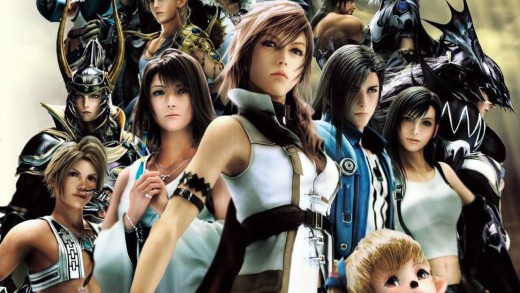
10. Final Fantasy
What other inductee to the numerous pleasures available for experience could serve as a better inaugural designation to the tenth position in this directory of divinity? A role-playing titan that has accumulated an affluent wealth of homaged tributaries-Square Enix's Final Fantasy of course! An excessive metric of delight was the progenitor of the developer's immaculate conception on December 18th 1987, when the last resort of Sakaguchi just...Materialised.
The instigative instalment into a franchise that featured so many autonomous sequels, independent of one another-amongst the superfluity of RPG peers(such as Ultima, Wasteland and Mighty Magic)-incorporated the staple characteristics intrinsic to the genre in such an immersive and innovative way, that it facilitated the succession of fourteen main series. Along with several ancillary games-Attributing their featured elements to multiple other genres, like the tactical and action RPGs, MMORPGs, Third Person Shooter RPGs, and many more; While still retaining the recurring facets of the familiar gaming mechanics of commanding a party of characters that traverse perturbing environments to randomly encounter foes, and engaging in turn-based and/or perpetually continuative battle actions in altercations with them.
That was proceeded by the eventual implementation of the open combat system in the most recent iteration of the Final Fantasy franchise-Final Fantasy XV. Versatile and unique features appearing consisted of the experience points that enhanced the attributes to the individual character classifications to really instil a facet of personalisation, the strong emphasis on the benevolent white magic, belligerent black magic, the combinative red magic, a blue magic(that imitates the incursions from adversaries), and the status-altering green magic. There were later expansions on this with the accompanying time magic and summoning magic, that conjured the influence on the atmospheric elements of gravitational pull, time lineage and the physical space, and the beasts that arrived to aid in combat. This, accompanied by the pervasive thematics of the heroes' defiant opposition to the beleaguering peril inflicted by the tyrannical and often archaic nefarious villains ominously imposing their malevolence on the world, while simultaneously having to confront their own internal demons and adversities within the overarching narrative(that accommodated essences of nobility, sacrifice, devotion, fidelity to a cause, the odiousness of the main enemy and their subservient underlings-who were tenacious in their own right), was enthralling enough to warrant the exposure of the universe via other methods of media transmission; CGI motion pictures, anime and manga. And permitted the spin-off Kingdom Hearts, and others as well.
To really accredit the embellished testament and legacy of such an influential franchise and saga-Accolades of the most critically and commercially successful video game franchises of all time, with an excess of 135 million copies of the game sold worldwide are the validation to such esteem.
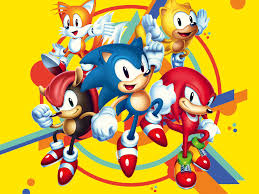
9. Sonic The Hedgehog
The ninth allotment to this list akin to the majority of its peers has sustained such a longevity in its tenure of lifespan through time, that it has transcended generations-Quite literally. Those ranging from the more mature of today's civilisation, to even the juveniles, possess such a tremendous sensation of nostalgia when reminiscing over this game. The sincerity and the fondness of the franchise that has experienced it's fair share of peaks and valleys while simply in pursuit of simply being as authentic a representation of the classic genre of gaming it originated from.
The speed-based platformer, Sonic The Hedgehog, is a product that is palatable for those of any age, gender or background to indulge in the tenacity and velocity of the blue Erinaceidae; And that spectacle was so abstruse in its initial rendition on June 21st 1993 on the SEGA Genesis was so amusingly entertaining through the high octane perpetuity of the side-scrolling escapades in the 16-bit environments-While attempting to prevent the malicious schemes of the evil Doctor Robotnik, as he incurred and incarcerated the adorable fauna of the Green Hill Zone and the other expansive terrains of Sonic's world, and attaining omnipotent superiority via usage of the fabled Chaos Emeralds.
Being aided by his allies of Miles "Tails" Prower and Knuckles the Echidna(an initial nemesis-turned companion) primarily to begin with in the best selling second and third titles, and then eventually by others; Such as Amy Rose, Vector the Crocodile, and Omachao-As the series evolved from the limited flying, racing and spin dashing with the access to alternative methods of traversal in the springs, platforms and other propulsive modes of transportation, to the temporarily obtainable enhancements of speed, absolutely vital ring retention, invulnerability(all acquirable through the crates distributed through levels), and checkpoints, shielding and wall climbing of the red menace in the second and third instalments, to the advanced 3-Dimensional plain in Sonic 3D Blast for the SEGA Saturn in 1996, as the platformer wars of the 1990s(of which the SEGA mascot was a momentously significant participant in) began to draw to a close. Following the isometric views of Sonic Labyrinth and some subsequent racing games, the redefined and reinvigorated the series, despite some tumultuous reception.
While there have been some games in the modern era that have certainly failed in flattery or advocative ramifications and not being adored in every incarnation of his character(at least immediately); The oscillation Sonic underwent to the quippy and facetious persona and the ability to rail ride and boost, coupled with the sprinting signified a necessitated development for the character, his friends and his games. It coincided with the precipitously expanding landscape, with the Sonic Adventure and Sonic Heroes titles-Yeilding a sublime multitude of luxurious exploits and alterations from the predecessors. Like Robotnik changing his name to Eggman being reflective of the reidentification of the franchise as they were accommodated by non-SEGA produced consoles; Such as the Gamecube, the PlayStation and the Nintendo consoles. This was very contentiously received in some subsections of the community, but what cannot be refuted is the fact that they were significant enough to warrant the transition into the latest generation of gaming platforms.
The Mario vs Sonic games were a very meta acknowledgement of the purported 90s rivalry, and retaining such staples of the franchise(like the adrenaline-inducing musical compositions and the eternal ring collecting) ensured the sustained, enduring longevity of the series. And that surely serves as a testament to something. What's more is that Sonic himself is amongst the few lead characters whose iconographic profile supplants that of the myriad of media forms that represent him-Spanning across the video games, films, cartoons and manga. What is indicative of such a level of deference is the sales of approximately 143 million copies of the games across all ports.

8. Need For Speed
Occupying eighth is the first of many of EA's contributions of many-Need For Speed. Presumably one of the primary reasons for such prodigious acclaim is the fact that, of all the racing games that are attempted by so many ambitious developers, none were able to delineate such a versatile range of the racing experience in the same way; With the player controlled car exhibiting the most realistic of gameplay mechanics would be imperative for prudent handling of the litany of ways to avoid wreckage on the scenic and ornate courses-Fluctuating all the way to the most hyperbolic thrills and ferocity of the relentlessly high octane street racing(while being pursued by the federals as introduced in High Stakes). Also simultaneously retaining indestructibility as the perpetuation of the chaotic insurgency ensued.
The individuality that could be imbued in the customisation of high performance cars like Ford GTs and Mercedes Benz SLR McLarens, muscle cars like the Ford Mustangs and Chevrolet Camaros, tuners like Mazda RX8s and Nissan Skylines and even police and civilian vehicles-Altering the body modifications and aesthetic, traction, downforce, and internal components(like the engine and suspension) to influence the performance in tournament or career-orientated races-Where the car tuning factors in significantly. Or just the free play casual joyrides that could consist of drag or drift exhibitions-The success of failure of which is determined by the first place finish without the detriment of collision in the former, or the accumulation of points via the longevity of an enduring drift in the latter.
Across courses all over the world on both real and fictional tracks in Hamburg, London, Australia and Africa being the most popular locations for the exhilarating simulation. Initially an attempt at immersive and authentic encapsulations of a race car driving career experience; EA made the realisation that the more dynamic and multifaceted approach would be the most beneficial, and so they amplified the sheer magnitude of the extremity to a surreal metric with the graphical exuberance, the imposing visuals(that juxtapose the beautiful surrounding cityscape), and the magnificent soundtracks that were so appropriate to the contemporary rush. A racing game series that had all the perturbation and animated vivacity of an action shooter, and cinema adaptations and licensed Hot Wheels toys, 26 Need For Speed titles, and the Motor City Online ancillary, along with the excess of 150 million copies purchased as per GamesPress manifest the immortalisation of the incredible product atop the summit it's genre's consummated veneration so aptly.
The purpose of video games is to provide escapism into the perfusion of pleasures that garner the investment of gamers and the engulfment of recreational ecstasy they are constantly striving to achieve and improve upon, and no other racing games compare proficiency in that pursuit-Accredited to Need For Speed.
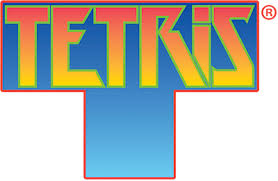
7. Tetris
Cameoing in the venture into the realms of the most nostalgic experience in perhaps all of gaming and the pandemic society percolating through the cracks of society around that facilitates the arrival of Tetris. This game is the only inductee to this itinerary that doesn't belong to an overall franchise per se, but it has had such an unorthodox and inextricably indelible impact of enticement in its simplicity as a humble puzzle game developed in the Soviet Union of all places in 1984. And there has been an innumerable volume of re-iterations of the original game throughout the majority of the industry's most prominent platforms in the several forms they can take-Such as the conventional entertainment consoles, graphing calculators, portable media devices, mobile phones and more. And an even higher density of tributaries have declared their undying idolisation of it through methods extending down to the menagerie of easter eggs in the background of their games, and blatantly manifesting it in the almost plagiarised imitations that have emerged down the years.
But what is really astonishing is not only the fact that Tetris has not been responsible for the odious over-saturation of the aforementioned imitators that have depreciated the image of the monumental impact it had in some way, but also that it is one of the precursory pioneers of gaming that has maintained its awe-stricken admiration by everyone-Despite belonging to a very niche market of gaming appreciation. So primitive by the conceptual standards of today, but reputed as an essential and unimpeachable legend within the perspective even of those ignorant to the virtues of the industry. Unapologetically.
The most popular version of the best selling single game of all time, as deemed by Forbes, was the 1989 Gameboy port, with the sales of 35 million copies-Bringing it to the prominent prevalence that it is now a worthy recipient of. And the basis of the fascination of the compelling simplicity is the guidance of the luminous tetrominoes that are comprised of four-unit geometric shapes, arbitrarily assorted into figures resembling the letters I, J, L, O, S, T and Z in their descent down the rectangular shaft. All in the endeavour aspiring to the objective of organising them into a ten unit horizontal line, that will dissolve upon assembly. And any blocks laying above it will replace the position formerly occupied by the units in question, in perpetuity of the repeated cycle.
When a predetermined amount of lines are destroyed, the game progresses onto the next level of difficulty, where the descent is hastened in an attempt to effectuate a failure, with an inundation of the shaft with units incompatible for dissolution. 90-degree rotations of a shape may be a requisite demand in order to enable the adjustment into a slot, and the scoring of the game is predicated upon the points awarded by single or double line clearances, and the triple line clearances that I, J and L are exclusively capable of. The criteria for the scoring system is formulated on the basic premise that the more complex or difficult a line's destruction is, the more points are rewarded in response-Denoting a single line clearance typically worthy of 100 points, double line clearances worthy of double the figure, and quadruple line relinquishment accumulating a total 800 points(known colloquially as a "Tetris"); Executing them in succession results in the allocation of approximately 1,200 points for each(differing slightly from game to game).
And that is where the seductive endearment of the game lies; It is within the competitive addiction that it impels. A cumulative total of 95 million copies sold is adequate to warrant the production of an impending film trilogy, and the endearing favour that it has sustained for decades has been a perennial and eventual eternal quintessence of an infallible game.

6. The Sims
Quaint, innocent and fun. That is the fundamental tone of the appointment of The Sims in sixth place, and the impetus for the 200 million copy selling virtual simulation game to its astonishing success. Based on the sandbox philosophy of a lack of objective, players are treated to the liberty of free roam, and dictating the interactions and whimsies of the residents that inhabit the fictional paradise of the gamers' own creation.
From the initial release in February 2000, the precedent for the diversity of the simulated specimens and their residences was set in a dimetric projection of the perception field over the daily activities of the Sims within the world, and the prominent features of everything ranged from taking a shower, to creating a family of Sims; With possibilities for aesthetic modifications(within the attire and physical characteristic adaptations), and mostly human personality trait refinement that could define the liabilities and susceptibilities of the Sims to certain courses of action. For instance, the metric for measuring these aspects through the aspiration meter implemented in the second game; Along with the transition to a 3-Dimensional graphical construction of the procedurally generated atmosphere and sprites that enabled the reward of the expandable aspiration points in accordance with the consummation of the desires of any individual Sim-Pertaining to their fervency across the progression of their life, that develops in several stages(from the infantile stage, all the way to seniority, and eventual mortality).
Yet another game that has provided such a sensation of the agency through the features of customisation of the landmarks and buildings and their walls, doors, windows, furniture and augmentable measurements. As well as the abundance of opportunities for character advances and activity expansion packs and ancillary releases, tangential from the main four games, that have enhanced and elaborated upon the palpable addition that is tremendously irrational, yet so irresistible. It is no surprise that the Sims is the best selling PC game of all time, and the gradual integration of EA's later games onto consoles performed impressively well too.
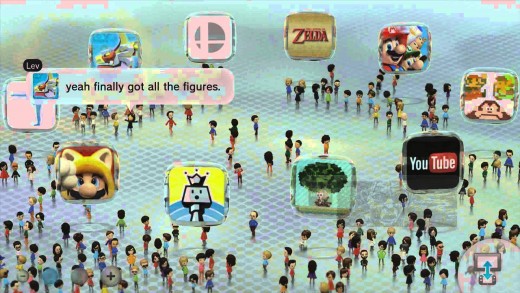
5. The Wii Series
The Wii series of games that were released with the distribution of the Wii console on November 19th, 2006 occupy the fifth position in the index. One of the incentivised elements for the purchase of the console initially was the incorporation of the customisable Mii avatars within the menu interface of the system, and the additional benefit of that was what distinguished the console from its competitors at the time.
An avaricious craving for the gaming port was validated further by the ability to not only indulge in the personalisable feature, but the luxury of being privileged to the usage of a created Mii within the promoted games accommodated by the Wii-Beginning with the launch of the contemporary release in tandem with the Nintendo console, Wii Sports(that boasted the purveyed delights of Baseball, Tennis, Bowling, Boxing and Golf). And while very basic in its guise, it did possess one very integral and radically revolutionary aspect-The innovative handset motion capabilities(of which the marketing campaign was highly strategised to revolve around in its promotion).A fascinating perspective conceptual design feature and it proved very advantageous for Nintendo for years, as the console was among the most prevalently endorsed and bolstered through the positive word of mouth in media-Television and films being the prime contributor to such, being played primarily for levity.
But it was a reverential caricature of fond reminiscence, of which the memes pertaining to which still circulate on the internet to this day. And even after over a decade after the original launch, there is still the exploit of the essential recency bias, that in order to capitalise upon and perpetuate the rising momentum from Wii Sports, Nintendo resolved with subsequent releases of Wii Play, Wii Sports Resort, and Wii Play Motion. And they further implemented the presence of the created Miis within the popular associated affiliate games; Like the Mario Kart games, Guitar Hero World Tour, and the then established sports greats, like FIFA and Madden. An absolutely stellar example of a game series that was tailor-made for a tranquil gaming experience, and could unintentionally and surprisingly become quite competitive as well.
It has consequented in the ramifications of the significant and reliable role it played in the seminal prosperity in the sales of an excess of 100 million sales of the console-Providing a reflection of the credentials to validate the delights of the fans, and stand as exceptional testament to the fact that it is not essential for a game to be caught in the entanglement of a convoluted plot in order to be an artistic vision.
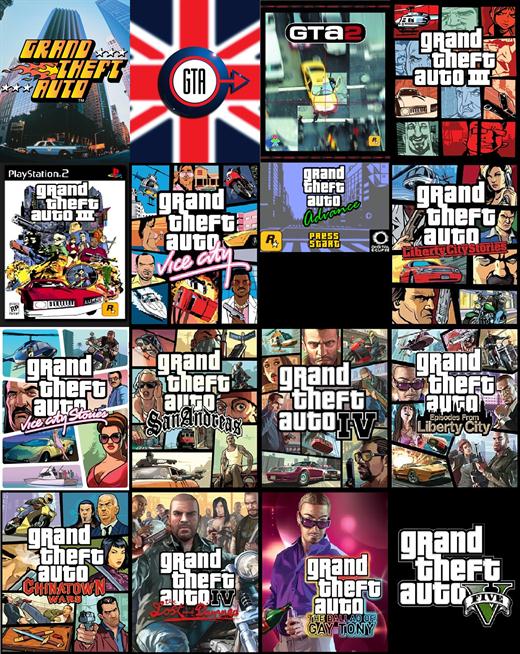
4. Grand Theft Auto
The gradual, but exponential approach to the pinnacle of this list is marked by the franchise that has such an impeccably intricate and explicit lineage of legacy, that to attempt to glorify it more elaborately than it already has been would be an exercise in futility. Controversial, seductive, ingratiating, alienating-The list of superlatives is limitless. Rockstar really stumbled upon magnificence in their manufacturing of the treasured property that is Grand Theft Auto. Admired by droves of proselytised fans, and lambasted by those insensitive to the insensitivity and crudeness of the irreverent, depraved and delinquent felonies, exploits and transgressions committed by the antagonistic, but sympathetic protagonist characters acting as the players' conduits for the vicarious experience of the virtual open world(as they run the gauntlet of insane disproportion throughout the cities of Vice City, Liberty City, San Andreas, Los Santos, Las Venturas, San Fierro and London); Exploring the pervasive thematics of duplicity, corruption, falsification, betrayal, promiscuity, degenerative contumacy toward authority, and even satirical humour.
But also occasional and effectively and proficiently integrated nobility, fidelity to a cause and a surrogate family, and even self-sacrificial heroism in certain instances in immaculately woven parabolic arcs and character progression. It was initially a top-down eagle's eye perspective on the 2-dimensional open world that was free to roam in on the October 21at 1999 inaugural release, back when Rockstar were operating under the appellative "DMA Design". And the evolution beyond the 16-bit depiction occurred in the third instalment to the franchise, following GTA 2 and GTA London 1969 &1961-Introducing the games to the platforms of the PlayStation 2 and Xbox with third-person views overlooking the non-linear progression of the narrative; Where multiple missions could be simultaneously active, and instigated by the player upon arrival at the necessary location, or the reception of instruction that could initiate the commencement of the engagements that contained everything from the innovative driveby shooting, auto-aim assistance, to the usage of assault rifles, submachine guns, sniper rifles, rocket launchers and flamethrowers(miscellaneously distributed throughout the environment, salvaged from the corpses of fallen foes and allies or purchased from arms dealers, replenishing health kits to restore life before a fatal wound[prompting then-screen signifier, "wasted" that was displayed]) before a respawn at a hospital at the detriment of loss of armour and currency.
The Wanted level added a morality complex to the nefarious endeavours of the unlikely heroes via the implications of a pursuit from the often over-zealous authorities; Getting caught resulted in the "Busted" status, that denotes the confiscation of arms or currency, if the situation was not assuaged by absconding the vicinity of the police's search, or by killing all the officers giving chase. Vigilante missions also provided the possibility of bribing the men of the law to turn a blind eye to the egregious deeds committed. A diverse array of auxiliary escapades, consisting of firefighting endeavours, taxi cab service provisions, miscellaneous stunt jumps and fetch quests, and other endeavours that were elaborated upon and given more depth in later releases with recreational tasks; Like skydiving and social meetings with the populous of the game's city. Also extraneous, but complementary optional aspects of engagement.
They were just some of many of the features to really enrich the finalisation of the product-Down to the intricacies of the fictional radio shows which contrasted the iddeological constructs of the real world society via a satirical and sardonic commentary that exemplified the conscientious effort invested into the production of the game. It essentially warrants the exceeding of 235 million copies sold worldwide, the abundance of coveted accolades of greatest and platinum hits on the Xbox, Xbox 360, Xbox One, PlayStation, PlayStation 2, 3 and 4, the Best Multiplayer, Best Design, Best British Game and a whole host of other awards-And Guiness World Records for Most Guest Stars in a Video Game, Largest Cast in a Video Game, and Most Successful Entertainment Launch of All Time-Across the multiplicity of the instalments into the franchise.
They all ensured the legacy of impregnably impactful and resonant salience that has been inextricable from the property. And despite the many controversies that have afflicted some of the games-predominantly for the depiction of the graphical viscera and belligerence that the third game, in particular, was burdened with, with the innovation of more immersive visual capabilities; The latter, of course, being able to exhibit a more detailed angle of it. And the apparent advocacy of the emphasised fellonious misdemeanours within the game(like the hiring of prostitues that can then be murdered to reclaim the payment for their services, robbery, the titularly-denoted grand theft auto, nuditiy depicted in seamlessly integrated cutscenes, ability to drive while under the influence of narcotics and alcohol, and thematics of acrimony between opposing gangs in their sinister and execrable transgressions). A unanimously undisputed dignitary of the open world game genre, but also of the many other genres that it has incorporated and derived specific traits from(in action-adventure, role playing, racing and first/third-person shooter games). It stands as an ambitious and venerable model for any aspiring developer to assimilate the hallmarks of for a successful an deferential output, and could realistically belong even higher than an already remarkable fourth place.
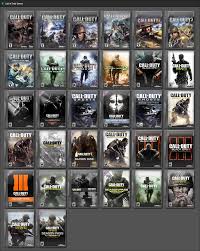
3. Call Of Duty
Ahead of an already distinguished bunch in third is a game series that accommodates such a copious volume of advantageous virtues-That have consummated in the enshrinement of the games of the franchise's glory days at the utmost echelons of illustrious prestige within the gaming industry. The purveyed privileges of gallivanting off in the ventures of the luxurious extravagance of entertainment have negated any detrimental hindrances to the ascension to the remarkably adulated and admirable epitome of an optimally prolific establishment of a gaming great. The saga in question is, of course, Call Of Duty. The labyrinthian gauntlet of scintillating action is what is so endearing about the best selling first-person action shooter franchise of all time; From the humble beginnings of the enmities of the Second World War in the first two games, spearheaded by the vestigial remnants of 2015 inc.(who were responsible for Medal Of Honour: Allied Assault), and the third publication having control over assumed by Treyarch.
Innovative strides were made in the prolific prominence of union with the ai allies being a revelation in 2003, and the transition to the formative and enigmatic regenerative health system from the manually-acquired sustenance in the second game, to the proffered flamboyantly exuberant advanced movement(intensifying the limits of jumping, sprinting, crouching and ability to ly recumbent on the ground in the prone position). This was exemplified furth in the evolution from the accommodating capacity of carrying two weapons, a sidearm, ten grenades, to the fully personalised customisation of the attached modifications and even the aesthetic appearance of them. They only function as the catalysts for the interactive conveyance of the parabolic threads containing the realisable practices and philosophical tropes of the noble and resilient defiance in the contumacious opposition to the enforced tyranny of those whom thought themselves imperviously superior-the fascist Nazis-and the benevolent sacrifices made by the galvanised heroes of the British, American, Canadian, Polish, Russian and French forces, in the name and preservation of justice and righteous liberty that really transpired amidst the horrendous conflicts
They were deferentially portrayed in an extravagantly amplified pugnacious perturbation instilled, and contributed to the overall allure of the games. The boundaries were pushed far beyond this in the main series sequel, Call Of Duty 4: Modern Warfare, as it oscillated from the acrimonious animosity of WW2 to the urban stage of the Middle Eastern and Eastern European frontiers-Against the OpFor terrorists and the radicalised extremists of the Russian Spetznaz. And despite the access to a tank in the second game being a gameplay feature to marvel at, the piloting of a surveying AC-130 was an incomparable and revolutionary contribution to a war simulator more authentic than any other.
In retrospect, the graphics could have been just as resemblant of the Tetris-like arcade games of the preceding decades. And even in those ignorant and naive times, they were tinted to an ornate level of realism in the players' perception-Perhaps due to the overall immersion and superseding scintillation of the overarching narratives that more than compensated for any visual inadequacies. This has been a recurring theme through the perennial lifespan of the ensuing games; Convening with World At War, all the way to Black Ops 2, and each game introducing some palpable assets for leisure, such as a predator drone, AGM control rig, the elaboration of class customisation through various camouflages with enhancements in the multiplayer and the new Special Ops game mode introduced in Modern Warfare 2, the enrapturing thrills and horror of the Zombies mode and the thoroughly expansive DLC of World At War, or the loadout section featured in the campaign missions of Black Ops 2.
While subsequent sequels have had some derogated faults in some way, shape or form(mostly the ruthless abandonment and neglect of any integrity in the campaign's structural enticement), there has been such a rampant affection for the series effectuating the deep desire to continue the upward trajectory established in the first decade of the series; It has seen the prevalence of multiple forms of media, through comic books, merchandise endorsement and even indie film. The sales of more than 250 million copies is a fantastic and astounding credence to be attributed to any video game and it is responsible for the current formation of the gaming zeitgeist.

2. Pokémon
Second place features Pokémon, and the model of a game to instigate the evolution of the entire perceptive stance of a whole subcultural demographic initially viewed as a juvenile and immature piece of triviality by anyone other than the immediately engrossed and inamoured fans, to the cultivation as a recipient of recognised reverence was primarily an innocent little game-Revolving around the adoption of small and arcane creatures by the aspiration of many young trainers, to be integrated into competitive duelling with one another(although that is not as jovial and innocuous as it frequently purported to be); In the various gyms and indigenous locations of the Kanto, Johto, Hoenn Sinnoh, Unova, Kalos and Alola regions throughout the eventuations of an action-roleplaying series. Featuring fights, and the implicit responsibilities of maintaining the health and welfare of the digital fauna.
Commencing in 1996 under the development process of Satoshi Tajiri to be allocated to the Gameboy port, the precedent was set from the very start for the complementary dual releases of Pocket Monsters Red and Blue in the country of origin, Japan. Then rebranded as "Pokémon" for releases to the Western world, and supplemented by the upgraded iteration of the game, Pokémon Yellow, the original cast of 151 Pokémon ingratiated themselves to the world with effervescence and compelling appeal. Assigned one of three starter Pokémon from three elemental classifications-Water, Fire and Grass. Being Squirtle(evolving into Wartortle and Blastoise), Charmander(evolving into Charmeleon and Charizard), and Bulbasaur(evolving into Venosaur and Ivy saur) respectively. The availability also being made for the selection of the franchise icon, Pikachu, as an incentivised exclusive with the purchase of Pokémon Yellow.
Following the adoption, the character(whose name is player-determined) acts as the conduit for the players' recreational trials, tribulations while venturing out from their homestead and equipped with an assortment of Pokéballs that act as the form of capturing and habitation of the wild creatures, and another material deemed necessary for the identification of them in the Pokedéx. Before eventually engaging in the turn-based battles where the prudent selection of the appropriate action from the array of the Pokémon's individual moves and the equipment contained within the inventory in the surrounding environment or the terminal gyms-While against ai or human opponents. The entire experience plays an extraordinarily important role in the following game that continued the same formula, and simultaneously introduced a new region and the 100 Pokémon native to that specific area, and the inclusion of the players' rival that always selects a starter Pokémon that is the unique antithesis to the gamers' preferred Pokémon's classification(except in the instance of Pokémon Yellow, Sun and Moon)-Providing the depth of a progression and friction between two trainers with the inspirited pertinence to the lifelong dream to become the ultimate Pokémon trainer.
As is the purpose of most RPGs, the intrinsic facet of agency and responsibility placed upon the consumers of the game is the most diagnosable cause behind the reckless and pandemic yearning for the merchandise that has become prevalently palatable-trading cards, manga, an incredibly successful anime show and its contemporary films(of which there are now 20) and the expanded universe of the game itself tenuring the lifespan of almost every console established since Pokémon's own inception; the Gameboy, the Nintendo 64, the Gameboy Colour, the Gamecube, the Gameboy Advance, the Wii, the Wii U, the Nintendo 3DS, the Nintendo Switch and the DS. And of course, the insane fervency that plagued the purveyance of Pokémon Go to the world on mobile. As deemed by Games Radar, one of the most successful RPG franchises of all time is the game series with the most spinoffs in the Guinness Book of World Records, and with the retained endearment of fans via the trading cards(despite the over-saturation of over 3,000 unique cards) and the 279 million copies of the game sold. That alone should suffice in the verity of the seminal and defining legacy of a whimsically wonderful game.
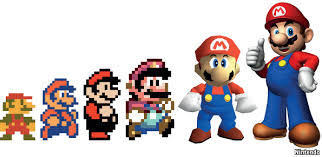
1. Mario
The position at the zenith is the obvious designation. The Mario series is the predictable alum to occupy the top spot, and none can possibly compare to the prestige and profound resonance that such a broad variety of types of games emanating from this icon has impacted and influenced the world several times over-As an absolutely inundating and objective fact. Originating in a game that was the platform for his peer, Donkey Kong, the Italian(originally American) plumber spawned with an ostentatious eminence in the arcade era of July 1981, from the immaculately idyllic conception of Shigeru Miyamoto. And he accomplished the modest task of merely avoiding the cascade of barrels thrown in his direction down the path leading toward his ape-like adversary, in the arduous task of emancipating the Princess named Pauline from his clutches. The template of that penchant for being the renegade rascal that he is was echoed in his first autonomous title, Mario Bros., and immediately established the character as a brand, and introduced his brother, Luigi-Only to modest reception in Japan upon its initial release in 1983.
But the true hallmark model for the franchise was exposed and embraced in 1985, when the emergence of Super Mario Bros. transitioned the navigation through the sewers of New York to the traversal of the Mushroom Kingdom in an attempt to liberate the Princess Peach(originally dubbed Princess Toadstool) from her hostile kidnapper, Bowser-a malevolent, giant turtle-dragon hybrid creature. He was the leader of the Koopa conglomerate of smaller turtle foes that served as just one of the sundry of obstacles necessary to circumvent, through the usage of the fundamental running and jumping mechanics, while negotiating the crevices and layers composing the landscape of the platforming prodigy's realm.
Of course, as it the nature of the genre and with Mario Bros., Super Mario Bros. was permeated with pipes to aid passage through the land, and breakable block yielding collectable coins that replenished the quantity of expendable lives upon the obtainment of them, powerups(such as the Super Mushroom enlarge and enhance Mario in allocation of one additional possible collision with goombas, spiked shell turtles, and other assorted adversaries, temporary invulnerability stars[but not exempting the fall down a crevice or into lava, or expending the limit of time necessitated for completion of a level], and the fire flower that permits and extra additional collision with the enemies and enables the ability to dispell fireballs to incinerate them with).
While en route to one of the multiple castles of which the princess was believed to be situated in her incarceration in each of the eight world(but only to be revealed to be a duplicitous scheme where the subsequent boss battle within transpired to be against a decoy of the tyrant) until the final castle, the side scroller found itself accommodated by the Nintendo Entertainment System, and was lauded as one of the games responsible for the reviving of the gaming industry following its crash in 1983, and then proceeded to release a slew of sequels-Taking the franchise in almost every conceivable direction with the Super Mario Bros. sequels, three Mario Bros. Lands, Galaxy, Sunshine, 3D Land, 3D World, Odyssey and others appearing on a colossal quantity of consoles from the SNES to the Gameboy, the DS to the Nintendo 64, to the Wii U. And the immensely popular reiterations were accompanied by puzzle games such as Doctor Mario, racing games that are jsut as famed as the platformers in the Mario Kart instalations, roleplaying games such as Paper Mario, the joint efforts of the main protagonist and his brother in the Mario & Luigi games like Partners In Time, the Mario Party party games, the sports titles consisting of Mario Strikers and Mario & Sonic at the Olympic Games among others, and the educational games like Mario's Time Machine.
Another significant feature of the games is the classic and prevalently resounding musical compositions that only need to be alluded to in order to elicit such a profound recollection of the World 1-1 tones or the sonorous disconcerting waves of the dungeon music, or the sounds of Bowser's castle. And the simplicity of it all combined the flawless execution of every feature of the visionary realisation of what the developers of the multitude of games interpreted what the identity of the character and the series should be. Introductions of new characters in Bowser's many minions and children, the Boos, Rosalina, Toad and so many others supplemented the complementary accessories of mobile games, cartoons, film, manga, comics and ornate merchandise has resulted in the consummate and prevailing success of an estimated revenue of 27 billion dollars sourced from 500 million game copy sales-Distinguishing the sanctity in the acclaim of the fifth best-selling media franchise of all time, let alone the best-selling video game series of all time. It is just astonishing.

